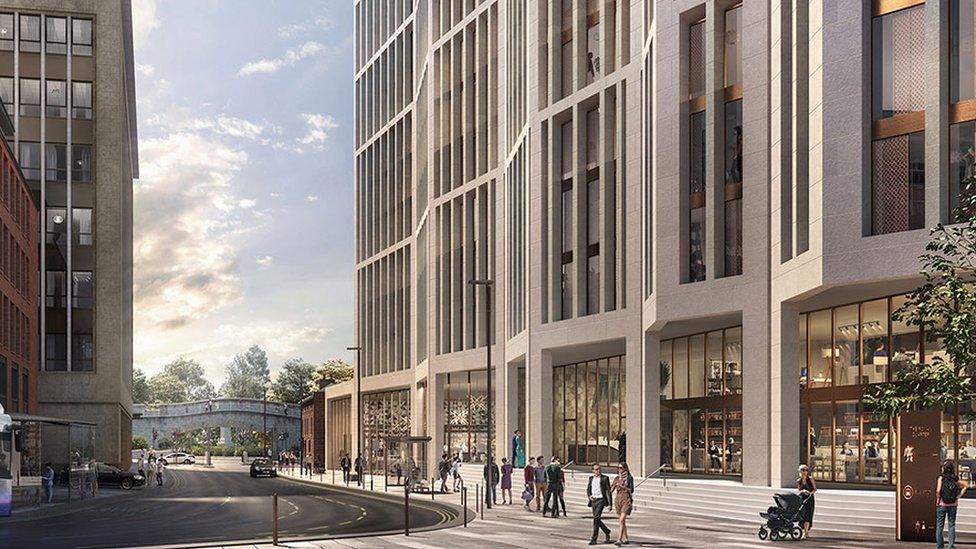York Roman Quarter project recommended for approval
- Published
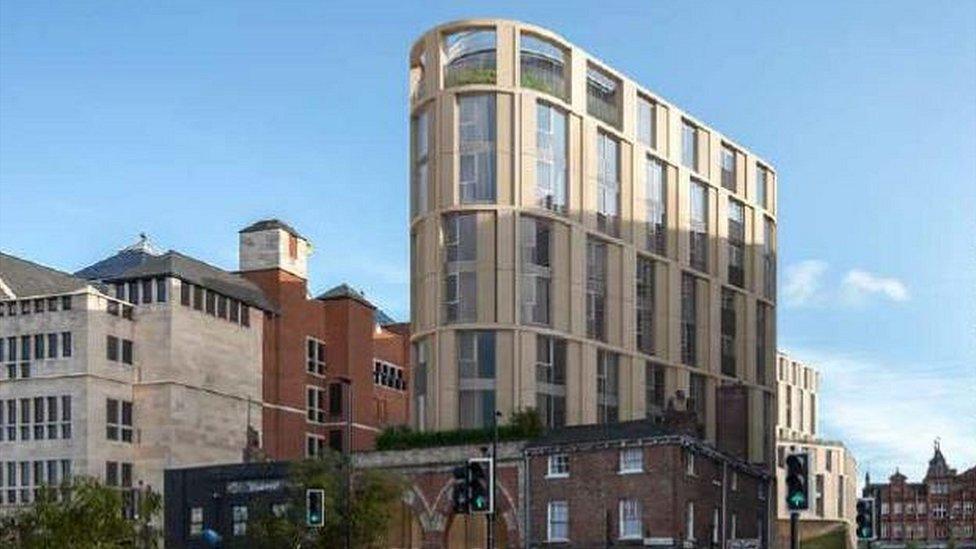
Developers said the scheme would generate £315m over 30 years and create 625 new jobs
Redesigned plans for a Roman Quarter development in York are set to be recommended for approval.
Initial proposals for the Rougier Street project, which included a Roman-themed attraction and 10-storey building, were rejected in 2021.
Objections to the scheme have been raised by both The Council for British Archaeology and Historic England.
However, the plan is expected to be given the go-ahead subject to a number of recommendations.
The Roman-attraction, to be called Eboracum - the Roman name for York - is set to be twice the size of the Jorvik Centre, run by the York Archaeological Trust (YAT).
Councillors raised concerns over the height of the building in the original proposals.
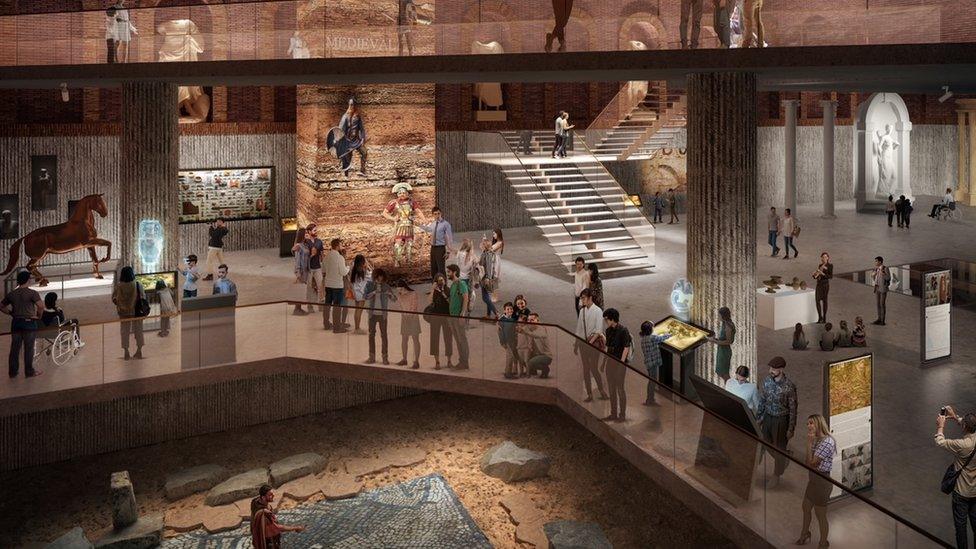
The proposed Roman-themed attraction would be twice the size of the city's Jorvik Viking Centre
Redesigned plans which consist of two buildings instead of one were submitted, with developers saying both would be lower than neighbouring structures.
Rougier Street Developments, which owns the site, and partners (YAT) said redeveloping the area would generate £315m over 30 years and create 625 new jobs.
They said the development would also include an 88-room hotel, 153 apartments and 25,000 sq ft (2,322 sq metres) of office space.
Objecting to the plans, The Council for British Archaeology and Historic England said the scheme had not been subject to "an appropriate level of evaluation".
Historic England added the current proposals could "harm the significance of the city's rich historic environment".
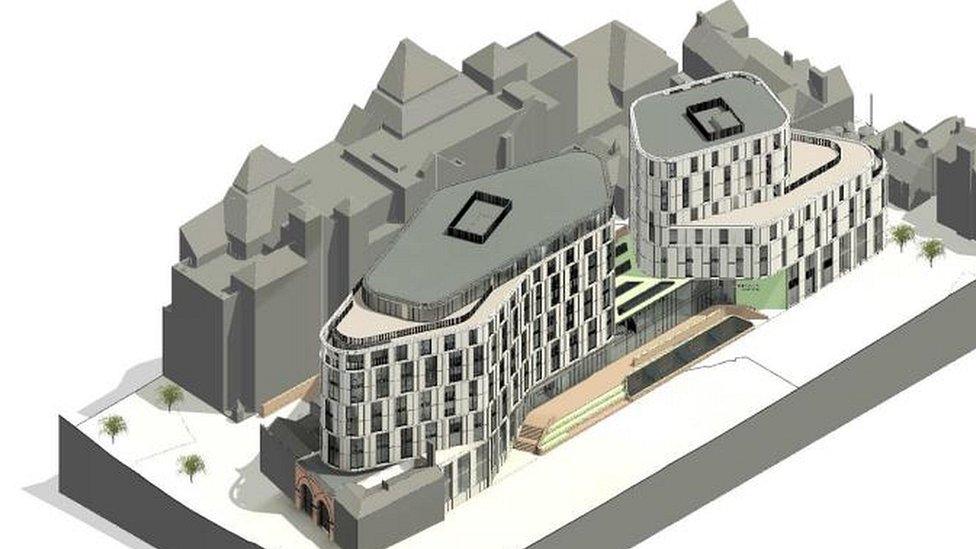
Objections to the scheme were raised by The Council for British Archaeology and Historic England
Council planning officers said it could be argued that the harm will be outweighed "by the benefits to the local community, economy, archaeological, academic and heritage management communities, that a substantial excavation this side of the Ouse will generate".
They have recommended the development should be approved at a meeting later and should be begun within three years from the date of permission being granted.

Follow BBC Yorkshire on Facebook, external, Twitter, external and Instagram, external. Send your story ideas to yorkslincs.news@bbc.co.uk, external.
Related topics
- Published27 January 2022
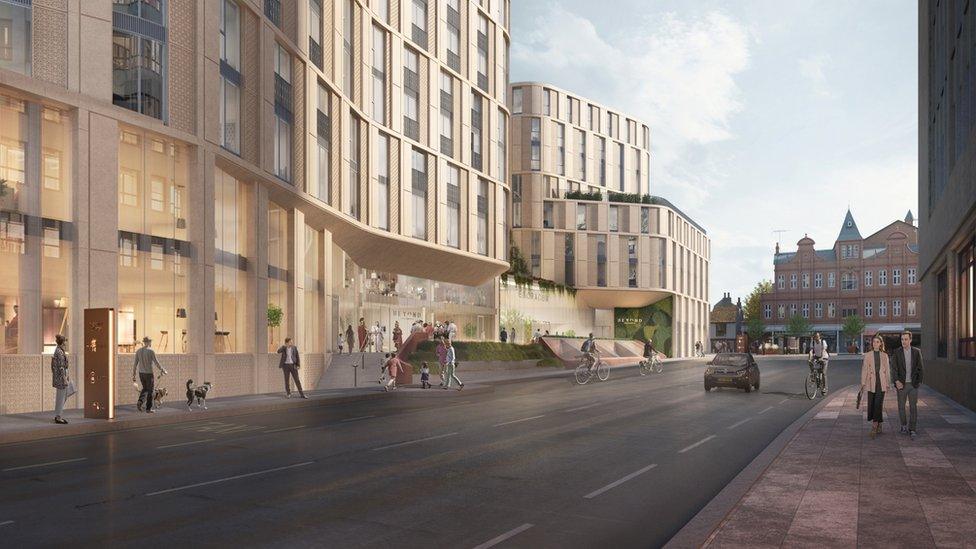
- Published25 February 2021

- Published4 February 2021

- Published26 June 2019
